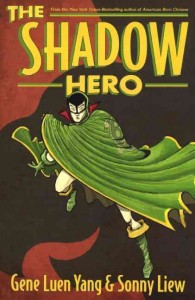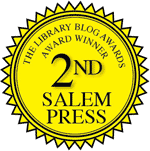 She’s one of the most memorable and enduring superheroes: an Amazon from Paradise Island sent to America to promote liberty and freedom while fighting suffering and injustice. She’s Wonder Woman (aka Diana Prince) and since her debut in 1941, her adventures have been chronicled in comic books, a daily newspaper strip, and a popular television series starring Lynda Carter. Wonder Woman’s adventures may be legendary, but the story behind her development is as incredible as any superhero story.
She’s one of the most memorable and enduring superheroes: an Amazon from Paradise Island sent to America to promote liberty and freedom while fighting suffering and injustice. She’s Wonder Woman (aka Diana Prince) and since her debut in 1941, her adventures have been chronicled in comic books, a daily newspaper strip, and a popular television series starring Lynda Carter. Wonder Woman’s adventures may be legendary, but the story behind her development is as incredible as any superhero story.
Wonder Woman was created by a man named William Moulton Marston, a polymath, psychologist, and huckster heavily influenced by suffragists and early feminists. The story of William Marston and Wonder Woman is a fascinating tale involving feminism, psychology, the advent of comic book superheroes, unconventional relationships, and family secrets. Historian Jill Lepore explores the complicated life of William Marston and the development of Wonder Woman in her entertaining and provocative new book, The Secret History of Wonder Woman.
Lepore’s narrative is divided into four main sections: Veritas, which recounts the early lives and education of Marston and his childhood sweetheart (and later wife), Sadie Elizabeth Holloway; Family Circle, an exploration of Marston’s family life, including his polyamorous relationships with Holloway and a former student named Olive Byrne; Paradise Island, an examination of the development and success of Wonder Woman; and Great Hera! I’m Back, a discussion of Wonder Woman’s influence and legacy. This structure allows Lepore to unpack the nuances of Marston’s life, work, and relationships and how they relate to Wonder Woman in an engaging and accessible manner.
William Moulton Marston was born in 1893 in Massachusetts. He attended Harvard University, where he became interested in the movement for women’s suffrage. He was particularly fascinated by the British suffragist Emmeline Pankhurst who, in 1911, was scheduled to speak at Harvard, but was later barred from speaking on campus.
Marston studied Philosophy and Psychology and was especially interested in determining whether or not deception could be detected by measuring systolic blood pressure. His research was instrumental in the development of early lie detector tests, and Marston testified as an expert witness in lie detection in several court cases.
After graduating from Harvard, Marston married Sadie Holloway, a Mount Holyoke graduate, and the couple stayed in Massachusetts to attend law school. They also pursued advanced degrees in Psychology.
While Holloway found work in New York as managing editor of Child Study: A Journal of Parent Education, Marston pursued a career in academia at Tufts University. At Tufts, he met Olive Byrne, niece of ardent feminist and birth control pioneer Margaret Sanger. Byrne became Marston’s research assistant and eventually moved in with Marston and Holloway.
Marston, Holloway and Byrne formed an unconventional family unit. Marston had a son and daughter with Holloway and two sons with Byrne, but they kept the true nature of Marston’s relationship with Byrne a closely guarded secret from everyone, including their sons. Byrne invented a husband named William K. Richard who died after a long illness, and wrote feature articles for Family Circle magazine using the name “Olive Richard.” In these articles, she discussed pressing issues of the day with prominent psychologist William Marston.
Over the years, Marston’s academic career fizzled, but he never stopped trying to promote his expertise in psychology and lie detection. He offered his services in the case of Bruno Richard Hauptmann, the man convicted of the kidnapping and murder of Charles Lindbergh’s son; he also appeared in an advertisement for Gillette razor blades. His efforts met with limited success until he was hired by Maxwell Charles “Charlie” Gaines, the publisher of Superman, to work as a consulting psychologist. At the time, critics were concerned about the level of violence in comic books, and Marston had a solution: create a female superhero that possessed “all the strength of Superman plus the allure of a good and beautiful woman.” Gaines was intrigued and Wonder Woman made her debut in the fall of 1941.
For several years, Wonder Woman was a major, if occasionally controversial, success. Working with artist Henry George Peter, a fellow supporter of women’s suffrage, Marston brought his vision of Wonder Woman as a “Progressive Era feminist” to comic books and a short-lived daily comic strip. She was not without her critics, who expressed concern about her costume and the pervasive use of chains and other forms of bondage. In response, Marston told his publisher that the motivation behind the imagery was to draw the “distinction between in the minds of children and adults between love bonds and the male bonds of cruelty and destruction.”
Despite the controversy, Marston’s vision remained largely intact until his death in 1947. Wonder Woman’s adventures continued, but subsequent writers and artists produced iterations of Wonder Woman that barely resembled the concept Marston had in mind when he originally created her.
Lepore’s background on Marston, Holloway, and Byrne is lengthy, but it effectively provides the social and cultural context for the development of Wonder Woman. She covers a lot of ground in these chapters and her lively writing style keeps the narrative moving at a brisk and enjoyable pace. The chapters on Wonder Woman and her legacy are similarly well-researched and include footnotes, a comics index, and extensive illustrations showing the evolution of Wonder Woman over the years.
The Secret History of Wonder Woman is a satisfying look at the making of a superhero, and the social and political changes that shaped her development.
Check the WRL catalog for The Secret History of Wonder Woman
Read Full Post »
 Refreshing and reinventing old superheroes has become somewhat fashionable recently, with rather mixed results. Some characters, like Batman, have seen so many iterations that it is difficult to separate them all, or find new ground to cover without being completely repetitive or utterly discarding canon. One good thing that has come out of this trend is the resurrection of old characters that never caught on, but were worthwhile for one reason or another.
Refreshing and reinventing old superheroes has become somewhat fashionable recently, with rather mixed results. Some characters, like Batman, have seen so many iterations that it is difficult to separate them all, or find new ground to cover without being completely repetitive or utterly discarding canon. One good thing that has come out of this trend is the resurrection of old characters that never caught on, but were worthwhile for one reason or another.





 While watching the
While watching the 



 There is something a bit meta about blogging about a DVD about blogging, but I’m doing it anyway. Dr. Horrible’s Sing-Along Blog was originally released as a series of three 15 minute webisodes created by Joss Whedon (of Buffy-fame) during the writers’ strike. It has now been released as a DVD and is definitely worth checking out. It features the acting and singing talents of Neil Patrick Harris as Dr. Horrible, an aspiring super villain. He blogs (and sings) about his efforts to become a member of the Evil League of Evil, his nemesis Captain Hammer, played by Firefly’s Nathan Fillion, and his love for fellow laundromat user Penny.
There is something a bit meta about blogging about a DVD about blogging, but I’m doing it anyway. Dr. Horrible’s Sing-Along Blog was originally released as a series of three 15 minute webisodes created by Joss Whedon (of Buffy-fame) during the writers’ strike. It has now been released as a DVD and is definitely worth checking out. It features the acting and singing talents of Neil Patrick Harris as Dr. Horrible, an aspiring super villain. He blogs (and sings) about his efforts to become a member of the Evil League of Evil, his nemesis Captain Hammer, played by Firefly’s Nathan Fillion, and his love for fellow laundromat user Penny. If, hypothetically, someone completely neglected to read comics in her childhood like she was supposed to, how would this person, now a grownup, become familiar with the superheroes?
If, hypothetically, someone completely neglected to read comics in her childhood like she was supposed to, how would this person, now a grownup, become familiar with the superheroes? It was bound to happen sooner or later. A blog sponsored by a public library would eventually have to have a review of the movie The Librarian: Quest For the Spear. I may be putting my professional credibility on the line, but I have seen this movie several times and never fail to laugh at the comical situations and great one-liners in this over-the-top but funny look at one very special library and its librarian. Noah Wyle is great as Flynn Carsen, a professional student in his thirties who has over 20 degrees and still lives with his mother, played very well by Olympia Dukakis.
It was bound to happen sooner or later. A blog sponsored by a public library would eventually have to have a review of the movie The Librarian: Quest For the Spear. I may be putting my professional credibility on the line, but I have seen this movie several times and never fail to laugh at the comical situations and great one-liners in this over-the-top but funny look at one very special library and its librarian. Noah Wyle is great as Flynn Carsen, a professional student in his thirties who has over 20 degrees and still lives with his mother, played very well by Olympia Dukakis.


